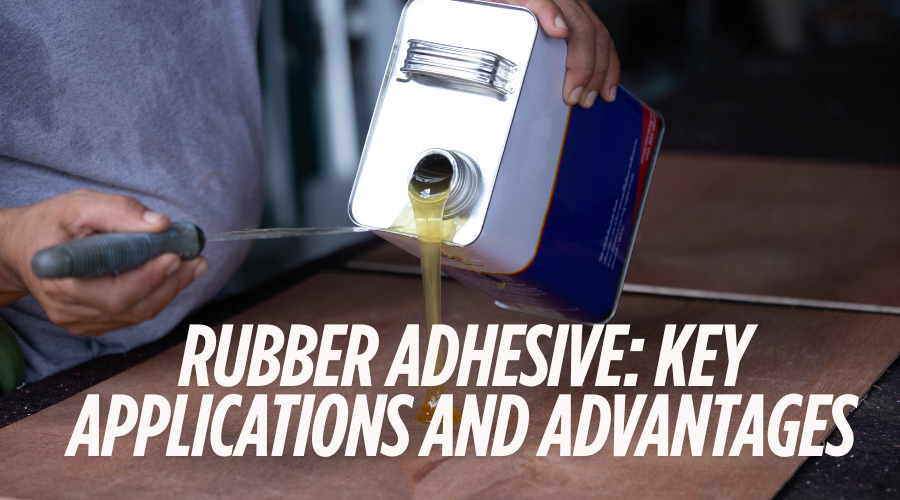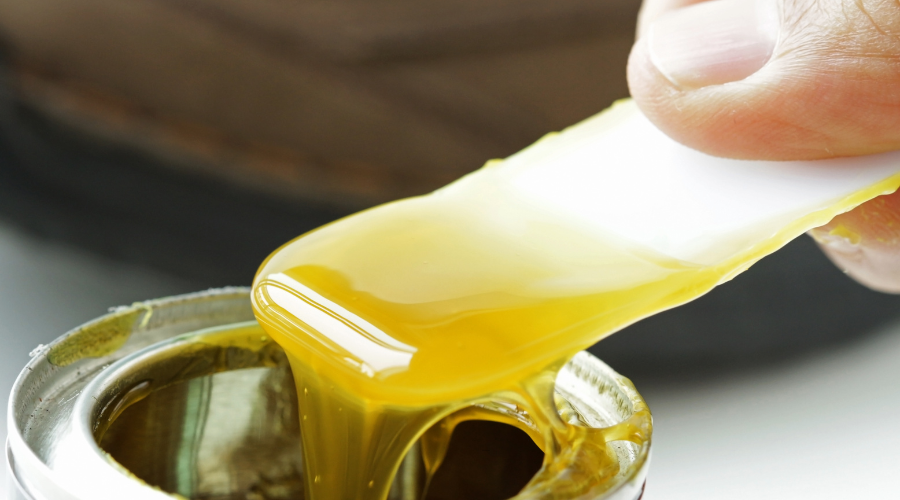
Rubber adhesives is a bonding material that has numerous applications across many industrial sectors.It is mainly used in cars, factories, and homes because it is durable and highly resistant to damage. Rubber adhesives are available in two versions: natural rubber and synthetic rubber. Adhesives made from natural rubber are made from a raw material called the latex which is a sap of rubber trees. They are valued for their remarkable flexibility and exceptional bonding capabilities. In this blog, we will look at rubber adhesives, in detail and how they ensure structural integrity of various products diverse industrial sectors. Moreover, we will discuss how to make the right choice in selecting an adhesive for your application.
Rubber adhesives can be solvent based, water based or pressure sensitive. The formulation of each type of adhesive is done to match the industrial applications. This makes the adhesive a highly versatile material that can be used to make all sorts of products.
In the automotive sector, rubber adhesives are vital for assembling vehicles. They are used in the making of a diverse range of vehicle components like carpets, door seals, and even parts of a dashboard console. The adhesives used in vehicle construction should be vibration-resistant and also tolerate fluctuations in temperatures. The flexibility of rubber adhesive means that it can be the bonded components can tolerate impacts and do not break easily.
Electronic industries also utilize rubber material in the building of their products. Rubber material comes in handly when components need to be stuck together. Some common components attached with rubber include, thermal pads and insulation layers. Rubber can be easily applied and does not need a curing process heat for effective bonding, which makes it a very convenient adhesive for electronics industries. Moreover rubber does hinder electrical conductivity making it an excellent material for appliance manufacturing.
Rubber material is globally preferred as a bonding material in the construction industry because it is water-resistant and provides a robust bond. Rubber adhesive provides a reliable adhesion in the installation process of tiles and artificial roofing, as it sticks to he tiles and insulation boards. Since rubber is an elastic material, it acts as a shock absorber, and this makes it a suitable material for bonding in buildings where vibration can occur due to loud sound speakers. Rubber is also used in wall paneling and insulation where quick bonding is the priority.
In the packaging sector a special class of rubber adhesives are used which are pressure-sensitive and make packaging really convenient as they are especially versatile. Pressure adhesives are used in all kinds of packaging from labels to seals and adhesive tapes. Rubber adhesives are the preferred option because they can be used in an instant and provide a quick adhesive solution rather than other adhesive materials that need time to bond.
This industrial sector needs rubber adhesives for manufacturing as well as the repair of items. Rubber adhesive is used to attach and stick different leather components, like synthetic soles, to leather uppers. This adhesive also comes in handy for mending worn-out shoes. Many shoe manufacturers prefer this adhesive because of its reliable bonding and long-lasting adhesiveness, since shoe quality is greatly interconnected with durability. The quick drying characteristic of a rubber adhesive also helps in quickening leather products manufacturing process which leads to overall higher output.
In upholstery and furniture accessories also involve rubber adhesives in their construction. The rubber glue attaches upholstery materials of foam fabric and wood. The adhesives ensure that the overall structure of the upholstery and furniture is neatly constructed. Moreover, the adhesive is applied in such a way and at different positions that it allows cushions and padding adequate freedom of movement. Furthermore, rubber adhesive can be applied through various means, such as in the form of spray or in the form of liquid that is applied by brush. Such varied application methods help streamline the furniture manufacturing process.

Rubber adhesive can stick together two surfaces reliably and such reliable bonding is immensely useful for labeling and taping. Moreover the elastic quality of rubber plays a crucial role in stress absorption which means that the bond does not crack and remains intact for a long time. Such qualities of rubber adhesive makes it particularly useful in footwear and automotive applications.
Rubber adhesive can bond a variety of surfaces like glass, plastic and metal. Moreover synthetic rubber adhesives also resist chemical effects and moisture allowing a solid bond that does not erode even when exposed to harsh conditions.
Applying rubber adhesive is effortless as it can be sprayed or the surface can be covered by a roller. It is available in liquid form, paste form and even tape form. Moreover, pressure sensitive rubber adhesive does not need heating for forming a reliable bond and simply pressing the adhesive tape is enough to create long-lasting adhesive.
Although rubber adhesive has numerous benefits but it also has its fair share of downsides. One disadvantage of using rubber adhesive is that it loses its adhesion if exposed to a high temperature. So environments having o high temperatures will degrade the bonds of rubber adhesive.
Rubber adhesive is also vulnerable to UV radiation and extended exposure of radiation only weakens the rubber bonds. Rubber adhesive is also unsuitable to use in applications where load bearing ins required to maintain a strong bond.
The rubber adhesive choice depends on several factors such as which materials will be used to bond them together, the kinds of exposure conditions to which the adhesive will be placed, and the type of application methods. In addition, various industry-specific requirements might also exist, for instance, those pertaining to food safety and electrical insulation standards. Consulting with adhesive manufacturers or product specialists provides invaluable guidance in ensuring that the chosen adhesive performs optimally in its desired use.
Rubber adhesives are a core bonding material that ensure the solid construction of numerous products. in all industries that find application in all types of industrial sectors ranging from from automotive manufacturing to packaging, electronics, and many more because of their excellent compromise between flexibility, tensile bond strength, and low cost. Generally, these bonds do not fail under any condition of application. This does not mean, however, that rubber adhesives are valid for every application; extreme heat and structural load conditions may not suit certain adhesion. As rubber adhesives proffer characteristics necessary for bonding needs in most general applications, businesses can limit their hunt for solutions to those adhesives that support specific cases such as where and how they excel; increasing product quality, production efficiency, and savings on overall costs.
1. What are the main uses of rubber adhesive?
Rubber adhesives are commonly used in automotive assembly, electronics, packaging, footwear, construction, and furniture due to their strong bonding, flexibility, and fast-setting properties.
2. What makes rubber adhesive different from other types?
Rubber adhesives offer excellent initial tack, elasticity, and the ability to bond with various surfaces, including non-porous materials. They are also easy to apply and often more cost-effective than other adhesives.
3. Are rubber adhesives suitable for high-temperature environments?
While rubber adhesives perform well in many conditions, they generally have lower heat resistance compared to epoxies or silicone-based adhesives. Synthetic rubber variants offer better performance in moderately high temperatures.